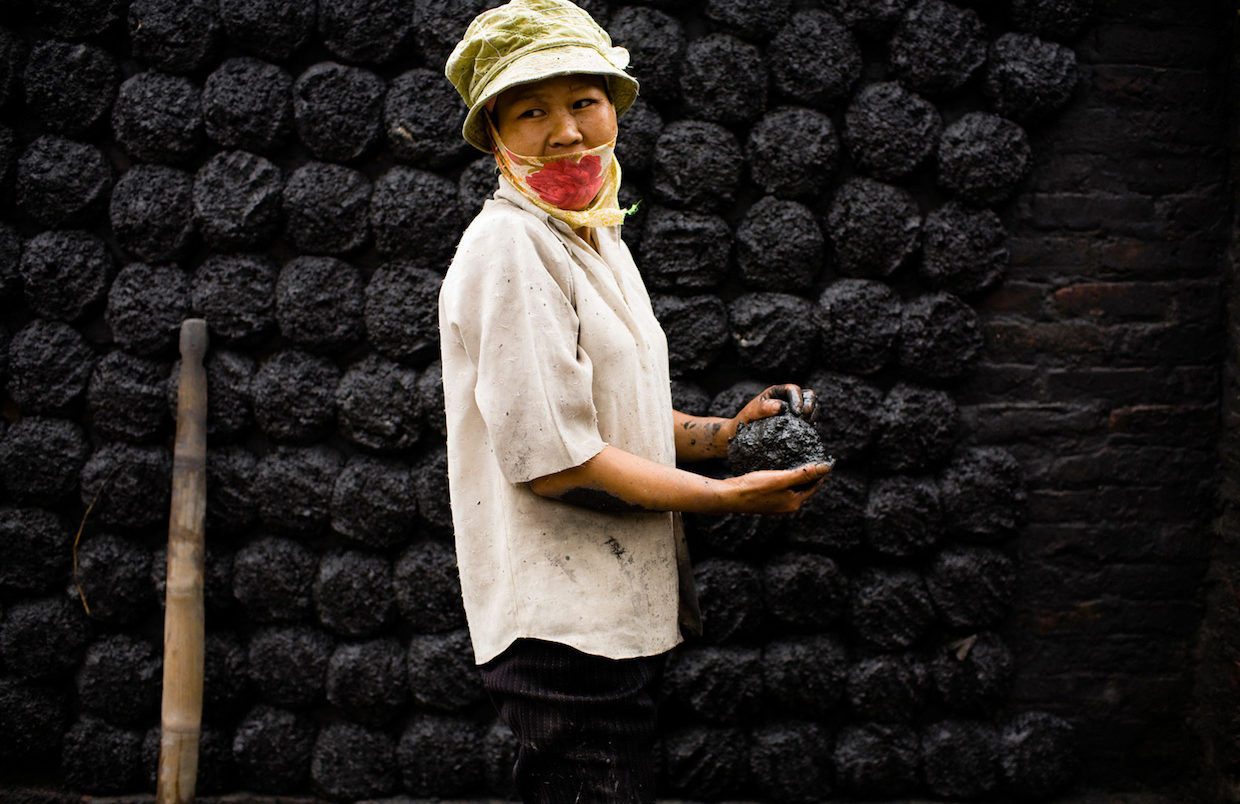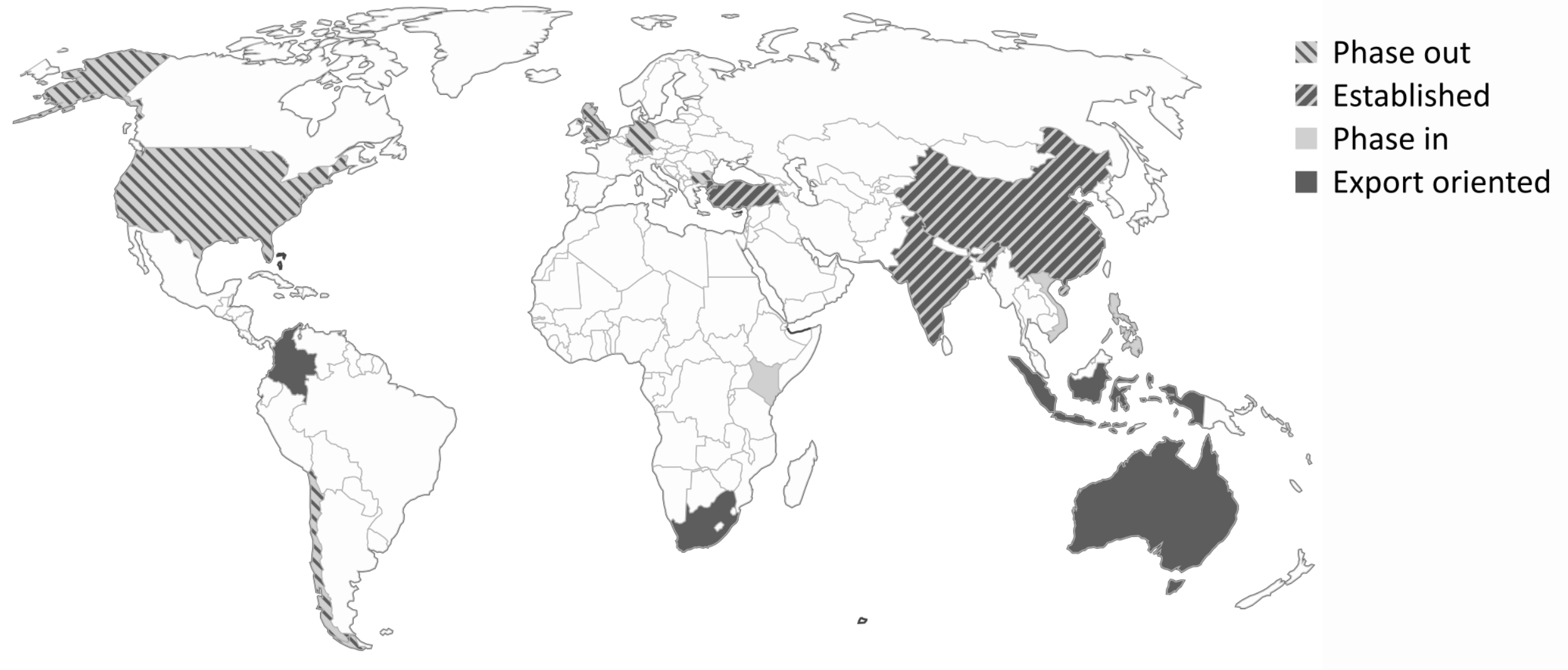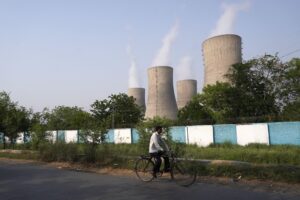
Guest post: What we learned about coal phaseout by studying 15 countries
Multiple Authors
08.01.22Multiple Authors
01.08.2022 | 8:00amDespite the widely recognised need to quickly move away from fossil fuels, particularly coal, many countries continue to invest in this highly polluting source of energy.
To understand why it is proving so hard to break up with coal, we worked with an international team of around 35 researchers to investigate the political economy drivers of its continued use.
We conducted 15 country case studies on what drives coal phaseouts – and what holds them back. Drivers include lobbying by powerful interest groups, public demand for what is perceived as a source of cheap energy, or the desire to create jobs and accelerate structural change.
Our findings, which have been published in an edited volume in the Routledge Environment for Development series that is available open access, looks at countries ranging from the UK, Bulgaria and the US to Vietnam, Kenya, China, Turkey, South Africa and Australia.
Despite highly country-specific contexts, we found that countries can be grouped into four broad clusters: those that have already announced coal phaseouts; those where coal use is in the process of being phased in; established users of the fuel; and major coal exporters.
Our case studies show that each of these groupings face particular challenges relating to coal phaseouts – and, hence, need different sets of policies to make the transition politically feasible.
Coal case studies
Coal is the most polluting fossil fuel and the single-largest source of global carbon dioxide (CO2) emissions. Its use accounted for 40% of global emissions from fossil fuels and cement in 2021.
The recent sixth assessment report from the Intergovernmental Panel on Climate Change (IPCC) said keeping warming below 2C “requires a rapid shift” away from coal, including the “cancellation of new coal power projects and accelerated retirement of existing coal plants”.
Moreover, in the “Glasgow Climate Pact” agreed last November, all countries agreed to “phase down” the use of unabated coal without carbon capture and storage.
Yet despite significant reductions in the coal pipeline, 38 countries around the world still have some 457 gigawatts (GW) of new coal power capacity under development.
We set out to understand the drivers of this planned investment, which is concentrated in low- and middle-income countries. We also sought to investigate the political economy of already implemented coal phaseout policies and the dynamics at play in major coal exporters.
In total, we worked with around 35 researchers to look at 15 countries, shown in the map below.

We assigned the 15 countries to four broad clusters, which each face similar sets of challenges and political economy drivers, and our findings for each group are summarised below.
Coal phaseouts: UK, US, Germany, Bulgaria, Chile
The first grouping we studied is made up of countries that have adopted some form of coal phaseout target, namely the UK, US, Germany, Bulgaria and Chile.
We found that countries that have adopted targets to phase out coal are mostly high-income countries with high technological, administrative and financial capacities.
In these countries, liberalised energy markets prevail, such that decreasing costs for renewable energy tends to push coal out of the energy system, even without dedicated support schemes.
A case in point is the US, where coal has been on the decline as a result of more cost-competitive alternatives, despite efforts of the Trump administration to actively support coal power.
In countries with high climate change awareness, such as in the EU, carbon pricing and support schemes are likely to accelerate the clean energy transition, our case studies showed.
In these countries, we found the largest challenge to meeting coal phaseout targets will likely consist in adopting policies to ensure a just energy transition.
For instance, this could include measures to promote structural change in coal regions, while at the same time ensuring economic prosperity, such as by strategically building up alternative industries and offering retraining for workers in the coal industry.
Coal phase-ins: Philippines, Vietnam, Kenya
The second cluster is made up of countries that are building up their energy systems to meet rapidly rising demand, namely the Philippines, Vietnam and Kenya.
These types of nation are often low-income countries, for which we found affordability and reliability to be key concerns. They do not yet have established interests in coal and the low costs of renewables favour the establishment of a low-carbon energy system.
However, in these countries, renewable projects, which require substantially up-front investments compared to coal-fired power plants, often struggle with high capital costs. These costs frequently arise from policy risks; for instance, in Vietnam and the Philippines, we found that coal-fired power plants benefit from more favourable regulatory treatment compared to renewable energy.
Measures to reduce policy risks for investors, by ensuring the long-term credibility of announced policies, as well as using “derisking instruments” to lower credit risks, could level the playing field and make renewable energy more attractive.
In addition, technical and administrative support to prepare electricity grids to deal with the variable nature of renewable power would help to accelerate the deployment of low-carbon energy sources.
Established coal users: China, India, Turkey
The third cluster of case studies includes China, India and Turkey, all established users of coal energy with significant coal mining and coal power industries. This group comprises middle-income countries, whose economic growth has to a large extent been fuelled by cheap coal power.
In these countries, we found that coal is an important source of employment, regional development and public revenue, and is connected to strong vested interests.
For instance, in India, revenues from transporting coal are an important source of income for the Indian Railway and are used to cross-subsidise passenger fares.
The prospect of stranded loans to coal-fired power plants also raises the spectre that lowering political support for the sector could endanger the stability of the wider financial system and have economy-wide repercussions.
In these countries, energy markets are dominated by state-owned enterprises, which we found to be prone to political meddling. For these actors, the lower prices of renewables only play a secondary role, in decision-making clearly dominated by political favouritism.
Hence, liberalisation of their energy markets could be expected to speed up the transition away from coal towards more cost-competitive renewables. We found that this process could be supported by institutional reforms to curtail the influence of vested interests – for example, in combination with a broader agenda of fighting corruption.
Furthermore, our findings suggest measures to compensate political losers and ensure livelihoods of workers employed in the coal industry will be needed, in order to make coal phaseouts politically viable in these countries – as opposed to the coal “phase downs” they have agreed to so far.
Coal exporters: Colombia, Australia, South Africa, Indonesia
The last country group is the most heterogeneous one, as it includes countries of different income levels. It also includes countries in which coal-fired energy is well-established – Australia and South Africa – as well as countries in which coal is almost exclusively exported (Colombia).
Nevertheless, we found in all these countries that coal constitutes an important source of employment, regional development and public revenue.
As a result, there are strong vested interests to maintain the extraction and export of coal. For instance, our case studies show that coal royalties account for a significant fraction of regional governments’ public budgets in Indonesia, as well as playing an important role in facilitating the peace process in Colombia. This makes it politically challenging to phase out coal.
One way for these countries to embrace an energy transition could be the provision of alternative revenue streams that satisfy the financial requirements of key stakeholders. For instance, in Australia, we found that the prospect of becoming an exporter of green hydrogen could counterbalance the political influence of the coal lobby.
Furthermore, it has been proposed that South Africa could gain a key position in the world market for green basic materials produced with hydrogen from renewable sources, such as steel.
In any case, in all export-oriented coal countries, we found that embarking on a transition away from coal could be an important element of a broad reform agenda, to diversify away from extractive economic models.

Conclusions
Globally, efforts to move away from coal are gaining momentum due to increased awareness of climate change and the lower – and falling – costs of renewable energy sources.
Nevertheless, significant barriers remain. To make coal phaseouts more politically feasible, our research suggests that policies need to be appropriate for the specific country context.
Domestic policies can also be propelled by international action. Countries phasing out coal could use international agreements as devices to increase the credibility of their phase out targets, for instance within a “climate club” of ambitious frontrunners, by a joint declaration under the umbrella of the G20, or by including them in their climate pledges under the Paris Agreement.
These countries can at the same time support countries with lower incomes and technical and administrative capabilities, with technical and financial assistance.
The findings from our research into 15 national case studies can help inform policymakers on how to design domestic – as well as international – policies to phase out coal.
Jakob, M and Steckel JC (eds) (2022) The political economy of coal: Obstacles to clean energy transitions, Routledge Environment for Development, doi:10.4324/9781003044543
-
Guest post: What we learned about coal phaseout by studying 15 countries
-
Guest post: What studying 15 countries reveals about how to phase out coal





